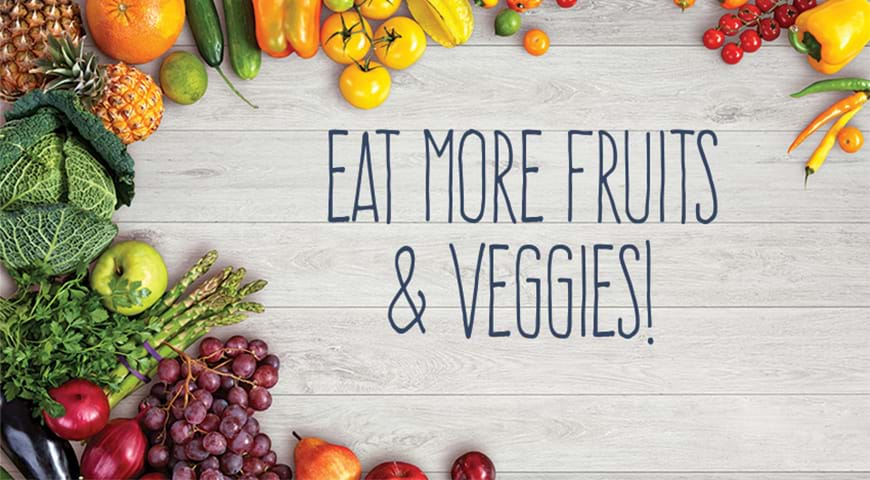How To Eat More Fruit and Vegetables
It’s good to add more fruits and vegetables to your diet for a variety of health benefits, including to lose weight. Whether you cook at home or eat out, try these easy ways to sneak more colorful, nutritious and delicious vegetables and fruits into your snacks and meals (even breakfast).
Fruits and vegetables are typically high in vitamins, minerals and fiber and low in calories and sodium. And eating a variety of them may help you control your weight and blood pressure. So, what are you waiting for?
Which fruits and vegetables are best?
That’s easy: They’re all good! When you eat many different types of fruits and veggies, you get all the different types of nutrients your body needs. The American Heart Association recommends filling at least half your plate with them to get to the recommended 5 cups of vegetables and 4 cups of fruits each day. The good news is that all produce counts, which means canned, fresh, frozen and dried varieties can help you reach your goal. Just be sure to compare food labels and choose the products with the lowest amounts of sodium, saturated fat and added sugars. Stick with the simplest forms, without heavy sauces or syrups.
Breakfast
• Slice open a melon, cantaloupe or grapefruit.
• Add bananas, raisins, dates or berries to your cereal.
• Drink a small (6-ounce) glass of juice. Be sure it’s 100% fruit or vegetable juice without excess sodium or added sugar not “fruit drink,” "cocktail" or “punch.”
• Add chopped up vegetables to your eggs or potatoes. Try onions, celery, green or red bell peppers, or spinach.
Lunch
• Enjoy a hearty fruit and vegetable salad for lunch.
• Add vegetables to your sandwich, such as cucumber, sprouts, tomato, lettuce or avocado.
• Eat a bowl of vegetable soup. (Compare food labels to avoid excess sodium, or make soup from scratch.)
• Have a piece of fruit or raw veggie sticks instead of chips or fries.
Snacks
• Keep raw veggie sticks handy, such as red bell peppers, cucumbers, green beans, celery or carrots.
• Carry dried fruit, like raisins, dates or apricots, in your bag for snacks on the go.
• Grab a whole fresh fruit like an apple, banana or orange.
• On hot days, munch on frozen fruits or vegetables, such as grapes, berries, peas or bananas.
Dinner
• Have a side salad with dinner.
• Add a side of steamed or microwaved vegetables frozen veggies make it easy!
• When you use the oven to cook your meal, put in a whole potato, sweet potato or yam at the same time.
• Add chopped vegetables like onions, carrots, garlic and celery when cooking soup, stew, beans, rice, spaghetti sauce and other sauces.
• When making rice, add some frozen peas for the last three minutes of cooking.
Add Color
If you’re already eating plenty of fruits and veggies every day, you may be ready for the next step: include more color. All fruits and vegetables contain vitamins, minerals and other nutrients that may help prevent heart disease, cancer and other illnesses. Some of these nutrients are fiber, potassium, folate, and vitamin A and C. The best way to get all the various nutrients is to eat fruits and vegetables of many different colors. And yes, white and brown count, too! Eat as many different colors as you can each day.





